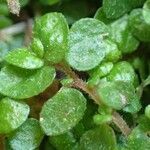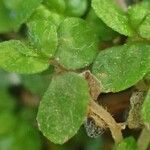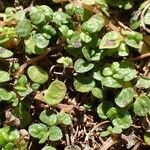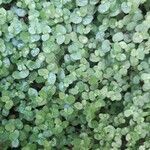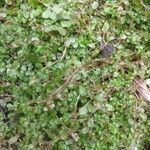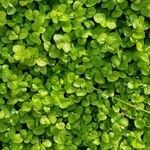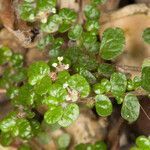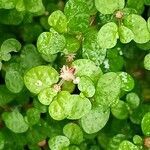Slender, sparsely hairy herb; creeping and rooting at nodes. Stem much-branched, 5-20 cm long. Lvs suborbicular, 2-7 mm long. Petiole c. 1.5 mm long. ♀ fls below ♂ on stem. Bracteoles 3, free in ♂ fls, connate in ♀ at fruiting. Achene ovoid, c. 1 mm long.
Herbs , 0.2-2.5dm, sparsely to densely pubescent with falcate and straight hairs. Stems rooting at nodes. Leaf blades 3-8 × 2-4mm, base prominently oblique. Achenes light brown, shiny, symmetric, 0.8-0.9 × 0.6mm, hard.
